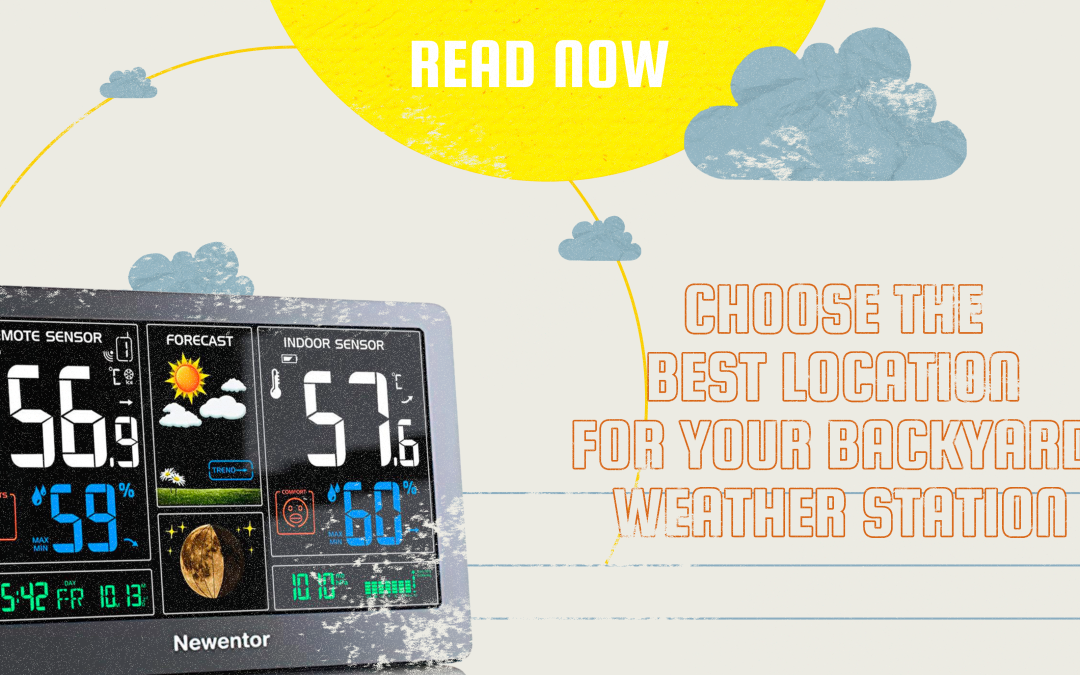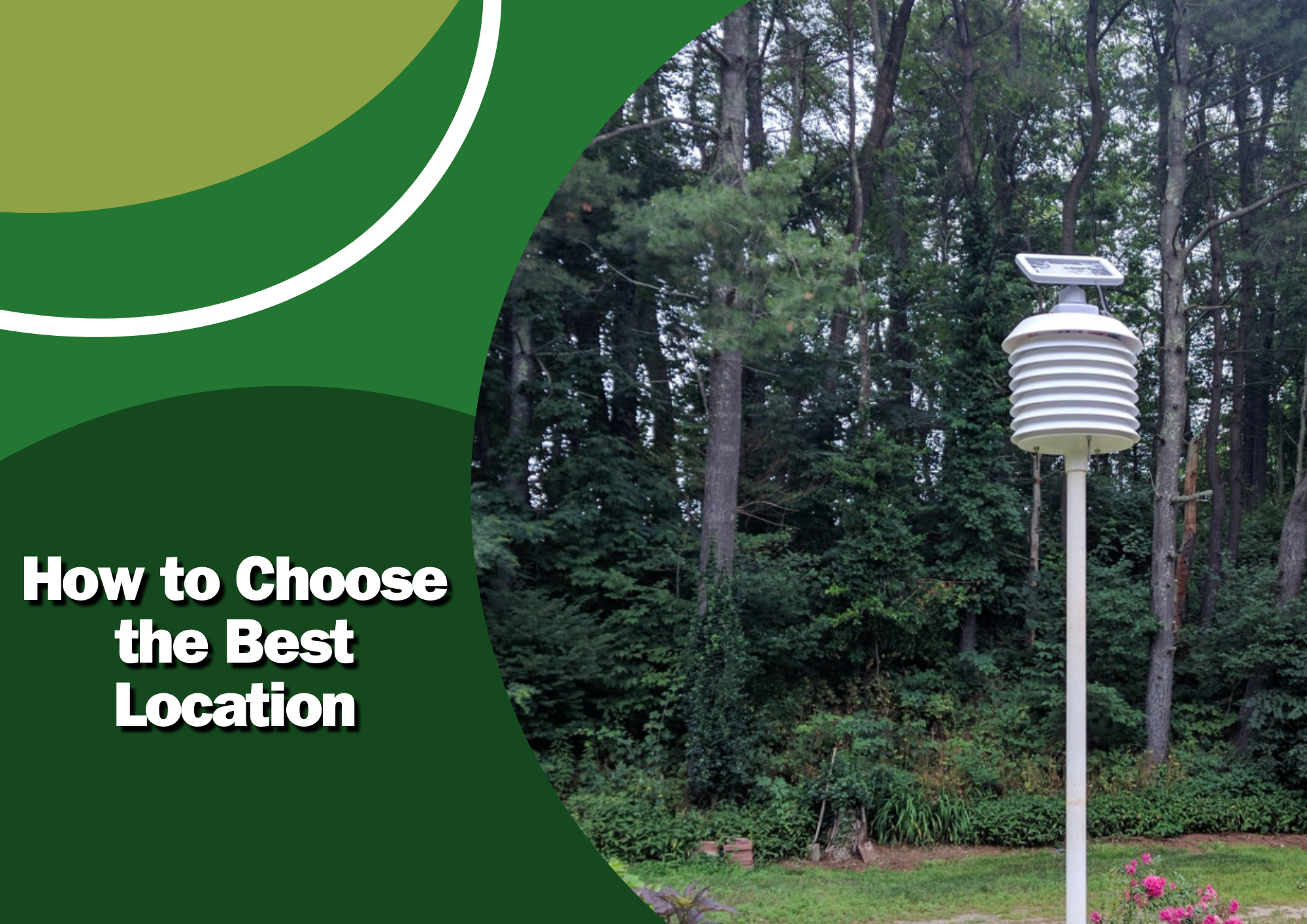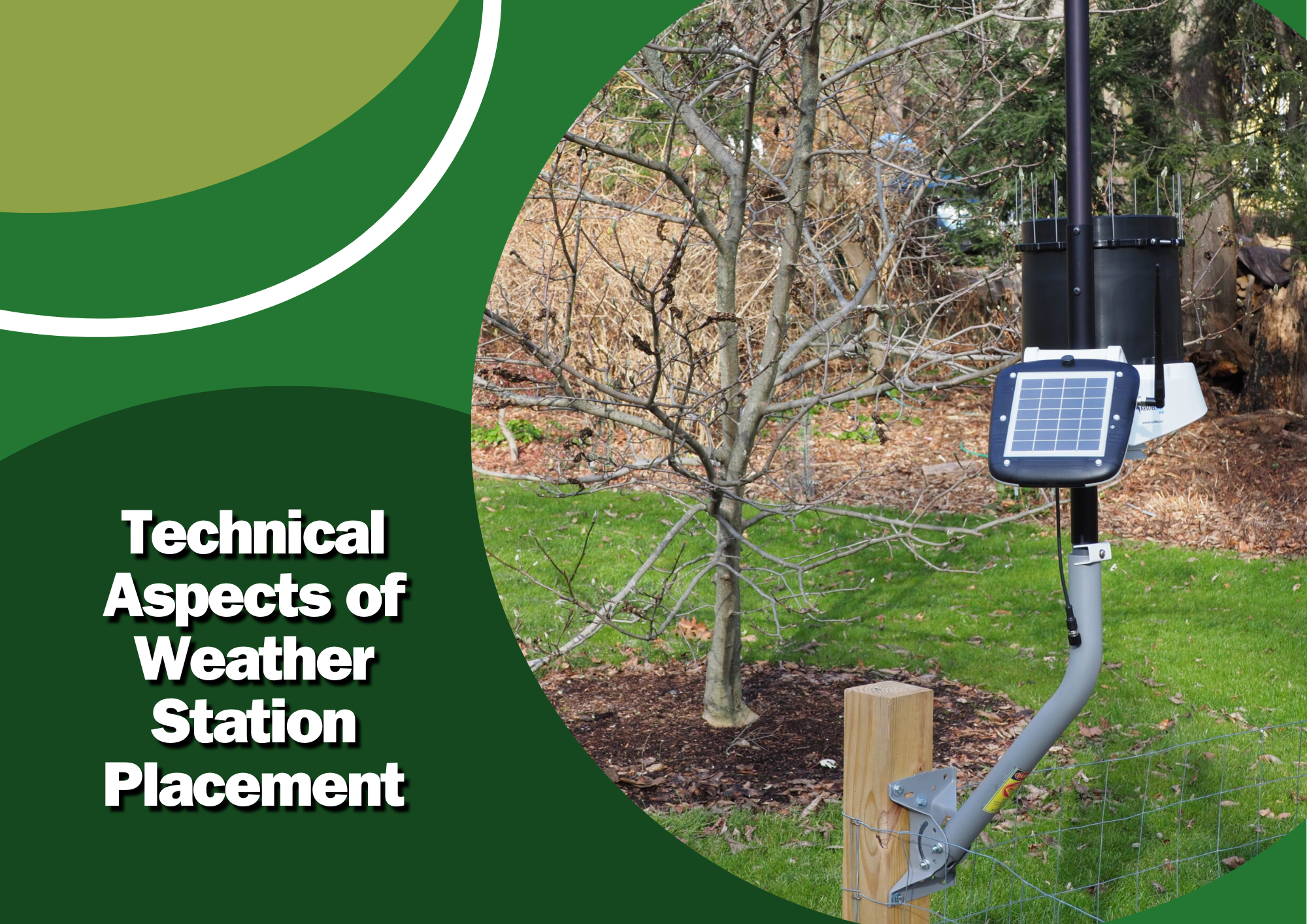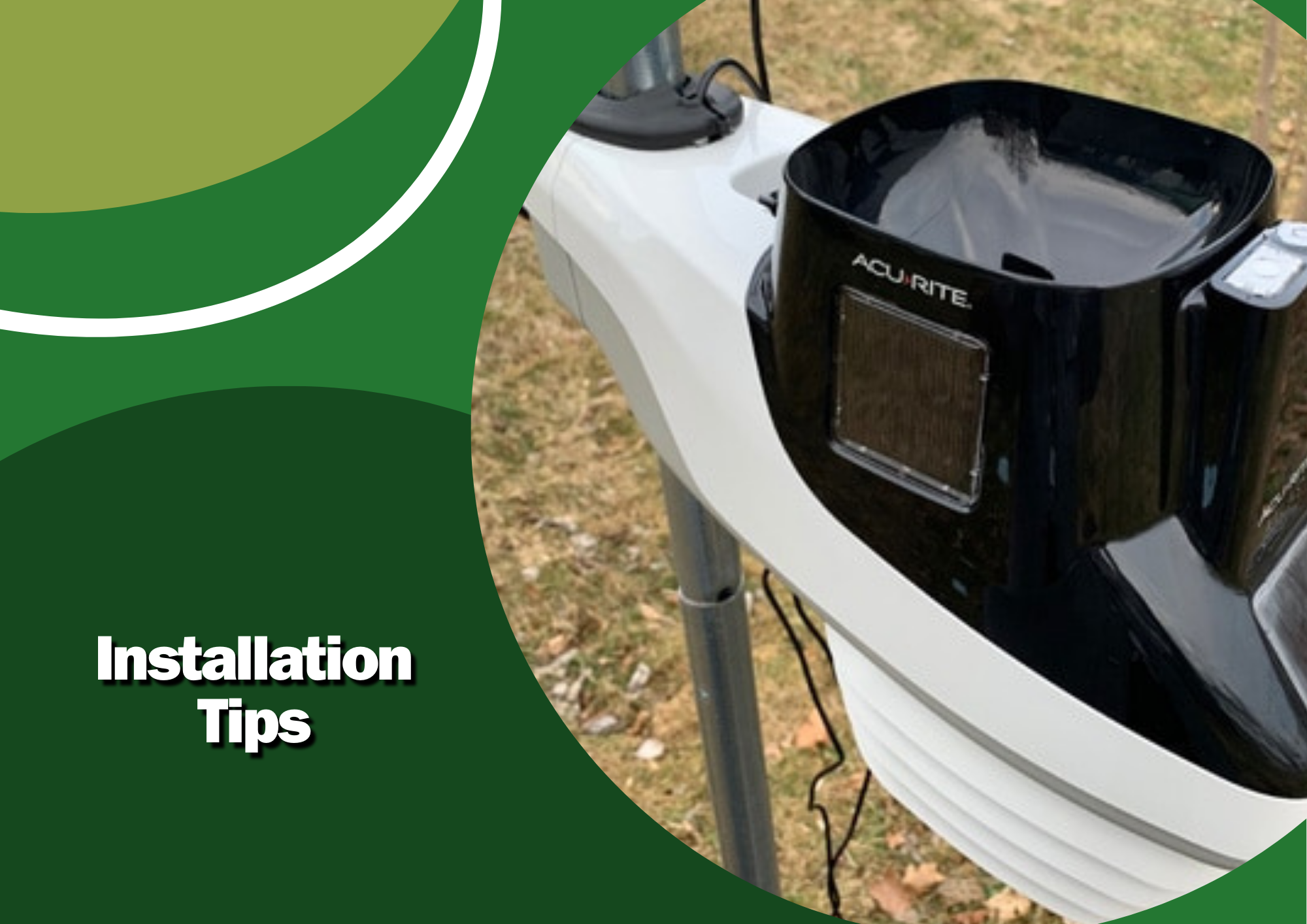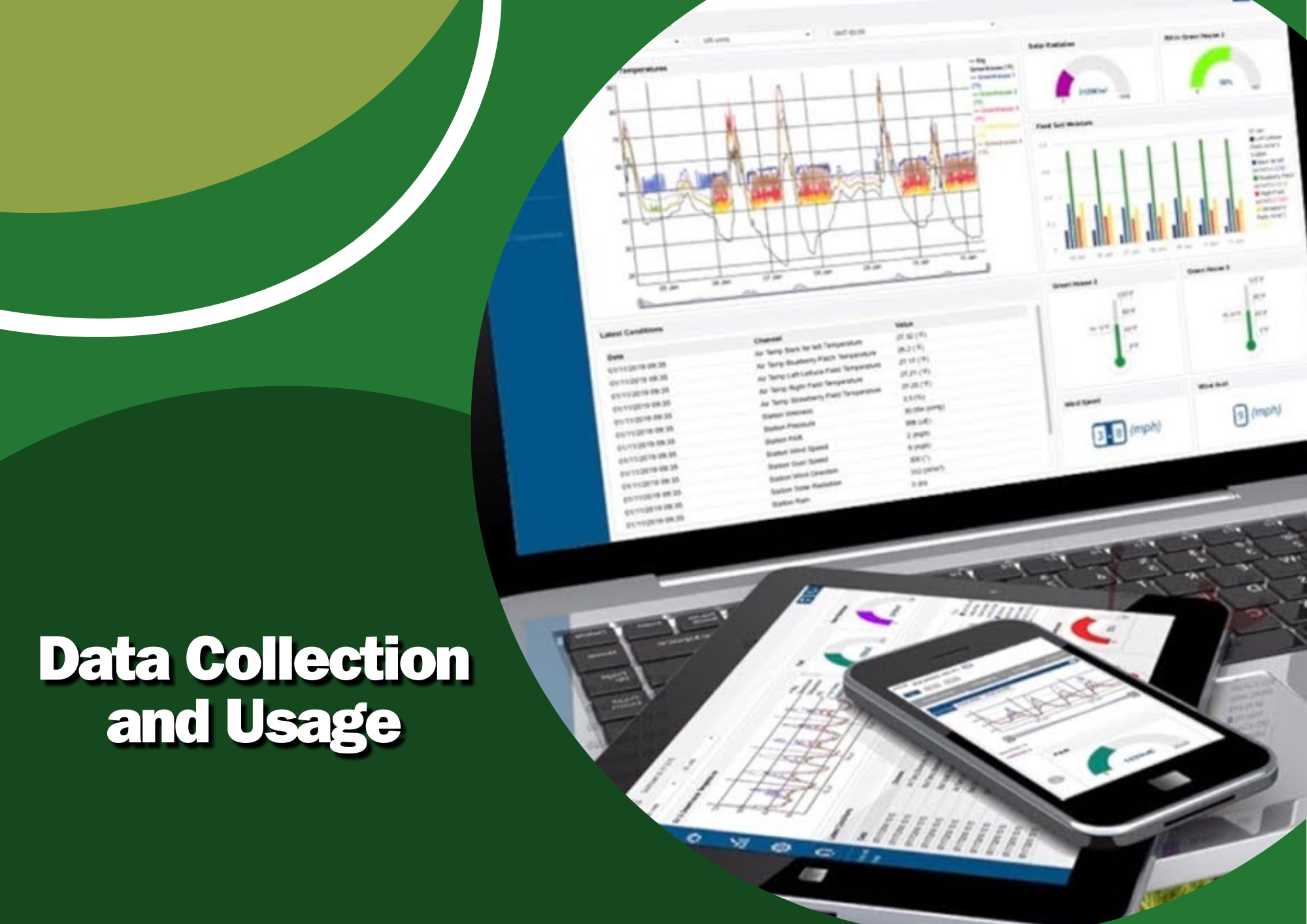==================
A Caveat and Affiliates
First off, a little caveat: within my articles you will find affiliate links, meaning if you buy them, I get a small commission. Your cost is not affected. In addition, I am an Amazon Associate and I earn from qualifying purchases on Amazon.
And yes, if I say that I recommend a product here, it means I truly believe it is a good product. I refuse to recommend any product that I have not researched and believe to be a good value.
Even better, I provide you with a very clear picture of the product, it’s use, and the probable value.
Earning your trust is important to me. I run this website myself and the commissions and donations help support the site.
Sound reasonable and fair enough? Let’s continue to the article.
==================
Do you know why your local weather forecast doesn’t quite match what you experience in your backyard? The secret lies in choosing the best location for your backyard weather station. In this article, we’ll guide you through simple, effective tips to find that perfect location. Enjoy reading!
Selecting the optimal location for your backyard weather station is crucial for accurate data collection and a better understanding of your local climate. The placement of the station affects not only the reliability of the readings but also the longevity of the weather station itself. You want to ensure that your weather station’s sensors are positioned where they can accurately measure environmental conditions without being influenced by artificial factors such as heat from buildings or reflections.
Your home’s weather station can provide a plethora of insightful data, but it’s imperative that you choose a spot that reflects the true conditions of your environment. This means finding a balance between convenience and exposure.
The location should be away from obstructions that could distort readings, like trees or buildings, while still within a reasonable distance for maintenance and data retrieval. Understanding the nuances of site selection will help you leverage the full potential of your personal weather station.
Key Takeaways
- Accurate positioning is vital for reliable data.
- Balance exposure and convenience for site selection.
- Avoid obstructions that can skew readings.
Understanding Weather Station Basics
Before diving into specific locations for your backyard weather station, it’s critical to grasp its essentials. You need to know what it is meant to do and the various types available.
Purpose of a Backyard Weather Station
Your backyard weather station serves as a personal hub for climate information. It provides real-time data on various atmospheric conditions right where you live. By monitoring local weather patterns, you can gain insights into temperature fluctuations, precipitation levels, wind speeds, and much more. This localized data is fascinating and can be incredibly practical for gardening, planning outdoor activities, or studying weather trends.
Types of Weather Stations
When it comes to weather stations, there are two primary types to consider:
- Basic Stations:
- Thermometer for reading temperature
- Barometer for atmospheric pressure
- Rain Gauge for measuring rainfall
- Advanced Stations:
- All basic sensors included
- Anemometer for wind speed and direction
- Hygrometer for humidity levels
- UV and Solar Radiation Sensors for sun exposure data
Each type ranges from simple to complex, with varying levels of detail and accuracy. The right choice depends on your specific weather tracking needs and interests.
Credits: @AmbientWeatherChannel
Considerations for Location
When setting up your backyard weather station, choosing the right location is crucial to ensure the accuracy of the data collected. Specific factors like exposure to elements, nearby obstructions, and appropriate height must be carefully considered.
Exposure to Elements
To obtain accurate readings, your weather station should have a direct exposure to environmental factors:
- Wind and Rain – Place sensors in an open area, away from tall fences, buildings, or trees that could block wind or alter rainfall measurements.
- Sunlight and Heat – Sensors need to be positioned to receive ambient temperature and humidity levels without being affected by artificial heat sources or direct sunlight, which could skew the data.
Obstructions and Surroundings
The immediate surroundings of your weather station can impact its readings, so be meticulous about where you place it:
- Physical Barriers – Buildings, walls, and dense foliage can obstruct wind and rain from reaching your sensors.
- Reflective Surfaces – Surfaces that reflect sunlight, such as windows or large metallic objects, can increase temperature readings. Ensure there is a clear path to the sky that is not impeded by these.
Height and Mounting Options
Positioning your weather station at the correct height is key:
- Anemometer – Typically, wind speed measurements are most accurate at 33 feet (10 meters) above ground level.
- Thermometer and Hygrometer – These should be mounted at about 4-6 feet (1.2-1.8 meters) above the ground and placed in a radiation shield to protect them from direct sunlight and precipitation.
- Rain Gauge – Ideally, it should be at least 5 feet (1.5 meters) off the ground to avoid splashback and be level to catch precipitation accurately.
Microclimate Recognition
Before setting up your backyard weather station, it’s crucial to understand the microclimates within your area. They can significantly impact the readings and skew the data you’re attempting to collect.
Identifying Your Microclimate
To accurately identify your microclimate, start by observing temperature variations and sunlight exposure in different parts of your yard. For instance, areas near buildings or under tree canopies may have different microclimates from open spaces. These variations occur due to factors such as shading, wind protection, and soil composition.
Conducting a soil test can reveal differences in pH, texture, and nutrients that characterize your garden’s microclimate. Observations over time will allow you to understand microclimates and make a more informed decision on the placement of your weather station.
Effects on Weather Data Accuracy
Microclimates can significantly influence the accuracy of your weather station’s data. For example, a station placed near a large body of water might register higher humidity levels and more moderate temperature ranges due to the water’s thermal properties.
Understanding the impact of microclimates on weather data is vital for obtaining precise measurements. Align your weather station away from areas with drastic microclimate differences to ensure it reflects the general climate, not the anomalies of a specific niche in your backyard.
Technical Aspects of Weather Station Placement
Choosing the best location for your backyard weather station is essential for the accuracy and effectiveness of your data collection. Consider the technical specifications crucial for optimal placement.
Sensor Range and Connectivity
Your weather station’s sensor range is paramount. To maintain a strong and stable connection, you must ensure that sensors are placed within the manufacturer’s specified range from the display console or data logger. For instance, if sensors operate on a 2.4 GHz frequency, obstacles such as walls can attenuate the signal, leading to loss of data.
- Check your weather station’s manual for its operational range.
- Avoid placing sensors too close to large metal objects or electronic devices that could interfere with signals.
Power Source Accessibility
The location of your weather station should have easy access to a power source. Whether your station is solar-powered or requires electrical power, ensuring there are no obstructions to the power source is essential for continuous operation.
- If your station is solar-powered, it should receive direct sunlight for the majority of the day.
- For stations requiring an electrical outlet, consider the safety of running power cables to the location. Use weather-resistant fixtures to prevent damage.
Installation Tips
Choosing the optimal location for your backyard weather station is crucial for accurate readings.
Secure Mounting Practices
Ensure your weather station is firmly attached to prevent any movement that could lead to false data. Use sturdy materials like a 4″ x 4″ wooden post or a metal pole and secure the mounting bracket properly.
For standard practice, the sensor array should be at least 5 feet above ground level to prevent heat radiance from skewing temperature readings and offer an unobstructed wind flow for wind speed measurements. Check that your setup adheres to the recommended clearances, such as installing the sensor array at least four times the distance from the tallest obstruction (guidelines from Ambient Weather).
Maintenance Access
You’ll need to maintain easy access to your weather station for regular cleaning and calibration. Position your station in a way that allows you safe and convenient maintenance, as debris, dust, and other environmental factors can impact the sensors over time.
Consider future access when installing. Placing it too high or in a hard-to-reach location can make routine maintenance a headache. For optimal performance, ensure that maintenance procedures like replacing batteries or cleaning rain gauges are straightforward and not impeded by the installation setup.
Careful planning of the installation site maximizes longevity and ensures data accuracy.
Legal and Community Guidelines
Choosing the best location for your backyard weather station requires attention to legal and community regulations to ensure you comply with established guidelines and maintain good relationships with your neighbors.
Residential Zoning Laws
You need to be aware of the local zoning laws that may impact where you can place your weather station. These laws often dictate the types of structures allowed in your yard, the height of these structures, and their proximity to property lines. Check with your local planning department to ensure your weather station’s placement is in line with municipal regulations.
Homeowners’ Association Rules
If you live in a community governed by a homeowners’ association (HOA), you’ll need to review the HOA bylaws. These rules can have specific stipulations on the aesthetics of your property, which could include the installation of weather stations. Some associations may require prior approval, so submitting your plans to the HOA board is wise to avoid potential disputes or the need to relocate your station after installation.
Data Collection and Usage
Choosing the right location for your weather station significantly improves data accuracy, which is essential for effective data collection and usage. You’ll want to ensure that the data you gather is reliable for analysis and potentially for sharing with weather data networks.
Improving Data Collection Efficiency
Positioning – To enhance the efficiency of your data collection, place your weather station away from obstructions. Ensure it has a clear ‘fetch’, or clearance, to avoid anomalies in data from wind tunnels or reflection.
Maintenance – Regularly clean your sensors and check calibration to maintain the integrity of data collection. Debris and dirt can skew readings, leading to inaccurate weather predictions.
Analyzing and Sharing Weather Data
Software Use – Utilize your weather station’s software to analyze the data. Understanding trends and patterns can help you in making informed decisions about gardening, outdoor activities, or even emergency preparedness.
Contribution: Consider sharing your weather data with online communities or services like Weather Underground. This acts as a backup of your data and contributes to larger weather prediction models, benefiting the wider community.
Wrapping It Up
Now, you already know how to choose the best location for your backyard weather station. Remember, the perfect spot is a balance between clear exposure and protection.
With these tips, you’re not just installing a device. It’s about connecting with your environment in a unique, personal way. With these tips, expect more accurate forecasts and a deeper appreciation of the weather’s impact on your home.
Are you ready to become a local weather guru? Share your experiences and insights with us! Join our community of backyard enthusiasts and add your unique observations. Let’s explore the skies together!
FAQs
What considerations are key when positioning a personal weather station?
Your weather station should be placed away from obstructions and reflective surfaces to avoid false readings. Ensure it’s positioned over natural surfaces like grass, as these surfaces will provide more accurate temperature readings compared to artificial materials like concrete.
What is the optimal height for installing a backyard weather station to ensure accuracy?
Mounting your weather station at 5 to 6 feet above ground level is recommended for accurate temperature and humidity readings. This height avoids heat radiating from the ground while capturing conditions that reflect your immediate environment.
What strategies are effective for protecting a weather station from the elements while maintaining data integrity?
You can protect your weather station by using shields or radiation plates to guard against direct sunlight and precipitation. These tools help maintain the data’s integrity by ensuring the sensors are not directly exposed to harsh weather conditions.
How does the orientation of a weather station affect its readings, and what is the ideal placement?
Proper orientation ensures unobstructed wind flow for anemometers and accurate sunlight exposure for solar panels. For example, an anemometer should be mounted away from buildings and trees, facing the prevailing wind.
What are the best practices for connecting and setting up a home weather station with Wunderground?
When connecting to Wunderground, ensure your station has a strong and stable internet connection. Follow the platform-specific guidelines for syncing your weather station data for accurate online tracking and analysis.
Can a DIY weather station pole affect measurement accuracy, and how can it be optimized?
A DIY weather station pole can be cost-effective, but it must be stable and vibration-free to avoid measurement errors. Use materials that withstand local weather conditions and avoid metal that could interfere with electromagnetic sensors.
Learn More About Your Backyard Weather Station!
Join our online community, and let’s monitor the weather together! Discover the precision, insights, and fascination that come with owning a backyard weather station. Embrace the excitement and discovery that awaits you in your own backyard.
Follow us on Facebook, Instagram, and Twitter, and let’s share our weather observations and experiences!
Facebook: https://www.facebook.com/BackYardPatioLife/
Instagram: http://instagram.com/backyardpatio_life
Twitter: https://twitter.com/happybackyard
Happy Weather Watching!
